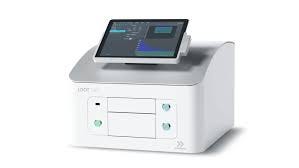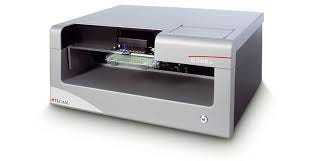Direct Dilution and Dispenser Deep Dives
Intro:
As I mentioned in last week’s post, some liquid handlers can dispense smaller volumes than a manual pipette. When dispensing at the nanoliter or picoliter scale, you’re able to perform direct dilution as opposed to serial dilution. I want to take a deeper dive into what direct dilution is, and go in depth about two small-volume liquid handlers that can be used for direct dilution.
Direct dilution vs Serial Dilution:
Direct dilution refers to adding the exact amount of sample to the diluent for a desired concentration, and it is typically considered more accurate than serial dilution. For a dose response curve, this could mean adding 122nL of s 1uM compound stock to a reaction volume of 50µl to achieve a concentration of 2.44nM for one of the doses. Some advantages of direct dilution are:
Smaller Margin of Error
Errors in serial dilution can compound as the dilution progresses. A 10% error in your first dilution will snowball into a 10x % error where x=dilution factor. With direct dilution, you can trace the error much more easily. This is especially true if your liquid handler has drop detection, like the I.DOT.
Less Sample Required
If you’re diluting precious clinical samples, you may use too much when making your starting dilution. By reducing dead volume, the small volume dispensers conserve more of that precious sample for repeats or other studies.
I wanted to take a deep dive into two small volume dispensers that I’ve used before, the Tecan D300e and Dispendix I.DOT.
Small volumes mean Smaller Errors


1. Tecan D300e
The Tecan D300e, formally owned by HP, uses thermal dispensing technology where the force is created by gas bubbles to drive fluid through a nozzle. This is similar to the inkjet technologies used to print documents. Here are some specs for the instrument:
I have used this instrument to generate dose response curves for small molecule and antibody discovery projects. The software is user friendly and gives consistent results with little maintenance. I wanted to move next to the I.DOT.
2. Dispendix I.DOT
The I.DOT uses pressurized air to dispense liquids in 8 channels. This instrument is FAST! Let's look at the specs for this instrument:
Next, let’s compare the two instruments.
Comparing the two instruments
The Tecan D300e and Dispendix I.DOT are two powerhouse instruments in any automated workflow. As I mentioned in the previous section, I used the D300e to generate 13 point dose curves in 384 well plates at 0.5% DMSO in 50uL. 0.5% of 50µl is 250nL, so if I were doing a two-fold dose curve, the lowest dispense would be 61pl. No intermediate dilution needed! The software was easy to use, and you could even upload a worklist to make your life even easier. Perhaps the biggest drawback to this instrument is that the consumable dispensing cassettes make it hard to integrate into a fully automated system. You see, the cassettes are not in SBS format, and would need to be filled by hand, which could lead to human error. This could change, since the D300e is a Tecan instrument, I would not be surprised if they were working on some sort of integration with their Tecan Fluent platform.
It’s harder to make larger dose response curves without intermediate dilutions on the I.DOT since the smallest dispense size is 10nL. We want to avoid any intermediate dilutions, as that could increase the chance of errors when dispensing. But, what the I.DOT lacks in picoliter dispensing capabilities, it makes up for in versatility and having SBS compatible consumables. The S60, S100, and S200 plates (the numbers refer to the µm pore size) are SBS compatible and can be integrated into a liquid handling platform like the Tecan Fluent, which can integrate 3rd party instruments into its deck. This integration means less human error and more walk away time when executing protocols. It’s used for a wide variety of applications, as mentioned in the table above. Additionally, the 8 channels allow for fast dispensing. Half of my time dosing plates on the D300e was spent waiting for it to normalize my DMSO plates, which could take almost 5 minutes per plate. The 8 channel dispense cuts that time almost 30 fold in a 96 well plate.
Both instruments have their place in an automated protocol. As someone who started in drug discovery doing serial dilution dose curves by hand, I was amazed and relieved that I could use the D300e to do the same work more quickly, accurately, and ergonomically than my multichannel pipette. Direct dilution is a game changer for a lot of automated workflows, and the Tecan 300e and Dispendix I.DOT are great tools to help make this work. Now, if all you have access to is a robot that can perform serial dilutions, I’d like to discuss best practices with how to make that work for your lab. Check back with me next week for that discussion.
I wanted to take this opportunity to launch my consulting website: https://www.escaautomationsolutions.com/
Please contact me if you’re seeking lab automation for your organization!
*Please take care of yourselves! It’s the day after the presidential election, and I know some of us are feeling a certain way.*



